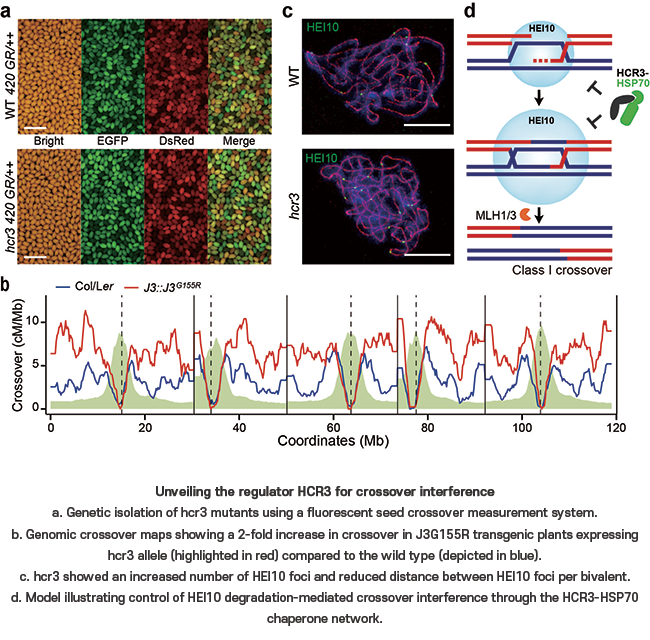A research team from the Department of Life Sciences at Pohang University of Science and Technology (POSTECH), led by Professor Kyuha Choi, PhD candidate Heejin Kim, and Dr. Jaeil Kim, has accomplished a remarkable feat by identifying the molecular mechanism underlying crossover interference during meiosis, a biological pattern at the chromosome level. The results of this study were released on February 20 in the journal Nature Plants, which is devoted to the study of life sciences.
Individuals who reproduce sexually resemble their parents or siblings. Even with the remarkable resemblances, it’s important to understand that complete similarity is impossible. The process of meiosis, which produces reproductive cells like sperm and eggs in mammals or pollen and ovules in plants, is thought to be responsible for this variance. By a process called crossover, meiosis produces genetically different reproductive cells, in contrast to somatic cell division, which splits and copies the DNA identically.
Meiosis and crossover are essential to biodiversity and have a big impact on breeding, which is the process of choosing and cultivating better crop features. Most plant and animal species typically show between one and three crossings for each pair of homologous chromosomes. Controlling the quantity of these crossovers may enable the cultivation of crops with certain desirable characteristics. Nevertheless, the “phenomenon of crossover interference” has made it difficult to achieve this kind of control. Fruit fly geneticist Hermann J. Muller first described the phenomenon of crossover interference in 1916. It occurs when one crossover prevents the creation of another crossover close by along the same chromosome. It has taken a century for crossover interference to be discovered, yet despite this, experts have been working on it nonstop. Only recently have the mechanics behind crossover interference begun to reveal themselves.
Also Read| Meiosis: Definition, Stages, Mechanism, and Diagram
The researchers in this study measured crossover frequency in Arabidopsis plants directly using a high-throughput fluorescence seed scoring technique. They discovered a mutant with an elevated crossover rate at the genomic level called hcr3 (high crossover rate3) using a genetic screen. Subsequent investigation demonstrated that a point mutation in the J3 gene, which codes for a co-chaperone connected to the HSP40 protein, was responsible for the increased crossings in hcr3. This study showed that the pro-crossover protein, HEI10 ubiquitin E3 ligase, is degraded more easily by the chaperone HSP701) and the co-chaperone HCR3/J3/HSP40 co-chaperone, which together regulate crossover interference and localization. Using genetic screen techniques, the crossover interference and inhibition route was found, solving a century-old riddle in the biological sciences.
The researchers in this study measured crossover frequency in Arabidopsis plants directly using a high-throughput fluorescence seed scoring technique. They discovered a mutant with an elevated crossover rate at the genomic level called hcr3 (high crossover rate3) using a genetic screen. Subsequent investigation demonstrated that a point mutation in the J3 gene, which codes for a co-chaperone connected to the HSP40 protein, was responsible for the increased crossings in hcr3. This study showed that the pro-crossover protein, HEI10 ubiquitin E3 ligase, is degraded more easily by the chaperone HSP701) and the co-chaperone HCR3/J3/HSP40 co-chaperone, which together regulate crossover interference and localization. Using genetic screen techniques, the crossover interference and inhibition route was found, solving a century-old riddle in the biological sciences.
Applying this research to agriculture will enable us to rapidly accumulate beneficial traits, thereby reducing breeding time.
We hope this research will contribute to the breeding of new varieties and identification of useful natural variations responsible for desirable traits such as disease and environmental stress resistance, improved productivity, and high-value production.
Professor Kyuha Choi
Source: POSTECH Research Highlights
Journal Reference: Kim, Heejin, et al. “Control of Meiotic Crossover Interference by a Proteolytic Chaperone Network.” Nature Plants, 2024, pp. 1-16, https://doi.org/10.1038/s41477-024-01633-y.






